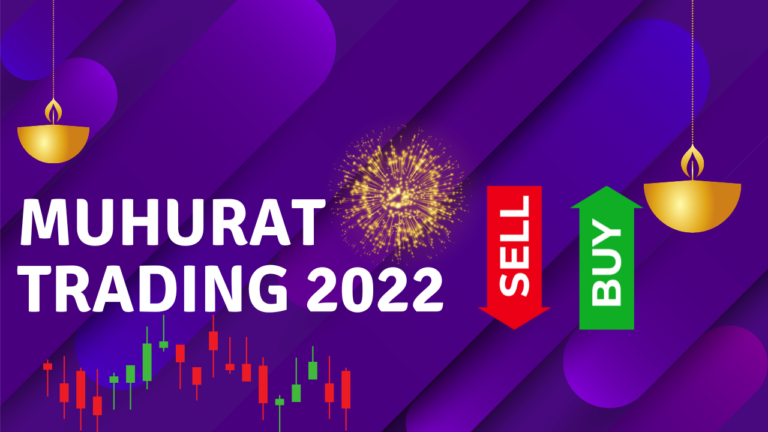
There is little doubt that social media will transform in Web3, ushering in a new era of a creator-driven economy.
In the past few months, if you haven’t been living under a rock, you’ve probably heard talk about the Metaverse and Web3 and how these two ideas are poised to usher in the next digital revolution.
Web3, which is expected to be the best version of the internet yet, has already generated some controversy. Some people adore the concept of a decentralized organization, while others are a little more skeptical. However, what precisely is Web3, and how will it impact you?
How will it especially impact how we use social media? In a nutshell, Web3 will usher in a new era of social networks that value a creator-driven economy and put community interests ahead of gatekeeper interests.
Don’t worry if this sounds hazy and a little intimidating—WAGMI! (That’s slang for “we’re all going to make it” in the cryptosphere.)
Learn more about what all of this implies and how social media is developing into something greater and bigger by reading on.
Web3: What is it?
The phrase “Web3” describes a collection of ideas and futuristic decentralized viewpoints in which community-driven, ad-free, and self-monetized content would rule supreme.
Although a huge number of current Web2-based business models will be disrupted by Web3, the creator economy is positioned to benefit greatly from this ongoing change, given a reinvented social media paradigm.
For instance, content producers are usually at the mercy of the platforms they use to distribute their work in the present iteration of the internet. This may lead to a variety of problems, such as arbitrary content censorship, the demonetization of content, or even deplatforming.
Additionally, a number of Web2 platforms maintain total control over the material, severely limiting authors. Consider how Facebook owns the pictures you upload to the site. Facebook now owns the pictures, even though you took them!
While simultaneously being the driving force behind these platforms and the primary reason content creators exist, users (consumers) are paid for their data.
In order to address these problems, Web3 gives content providers full authority back. Web3 rewards consumers for their ongoing participation and support while enabling artists to profit from a variety of revenue sources through the use of blockchain technology and cryptocurrency.
As a result, a circular economy is created that is free of the constraints imposed by centralized platforms and middlemen.
Decentralized social networks: How do they operate?
Think about the idea of compensating internet users for their usage for a moment. We use one or more Web2 platforms frequently, whether it’s to read blogs, watch videos, or simply browse the internet.
We use platforms that make a lot of money, but users rarely get anything in return. Web3 significantly modifies this by compensating users for their involvement.
There are presently a number of Web3 platforms powered by blockchain that are useful to both artists and consumers. These platforms include web browsers, video-sharing websites, blogging platforms, and social networking sites.
Instead of pursuing a zero-sum strategy where one side must win for the other to lose, these platforms, powered by their native tokens, present a symbiotic paradigm where everyone benefits from the internet.
Decentralized social networks provide built-in payment layers to accomplish this, eliminating unwanted middlemen and pointless expenses.
Additionally, they are completely interoperable, enabling users to easily buy, sell, and trade native assets across various platforms. For instance, content producers can use NFTs to monetize their work and sell it on various platforms.
In order to expand their possibilities for creating money, they can also create unique subscription models and add-on services for their communities using the native token of the underlying platform.
Web3 platforms, on the other hand, allow content producers to participate in the growing metaverse by enabling them to design a variety of play-to-earn, learn-to-earn, and other comparable incentive programs for their communities.
Community members can gain platform-native tokens by participating in these activities. They can then use these tokens to pay for new platform features, reward creators, or exchange them for other tokens.
A social network’s native token owners may also influence how the network evolves in the future. With Web3, stakeholders share responsibility for the platform’s progress, in contrast to Web2, where users have little to no say in it.
Token owners control a platform’s future by casting votes for ideas that will best serve their communities. These recommendations address a wide range of concerns, including new features, improvements, and adjustments to current development and marketing.
The distinction between present-day and Web3 social media website development objectives
Due to the introduction of Web3, there has already been a change in how marketers approach social media. Brands generating content on their social media channels were at the heart of Web2’s social media strategy.
The brand would occasionally react when the community interacted with the material. Community members who followed the brand on social media showed little to no involvement.
Social media is merely media if you are not interacting with your brand there. Content, as we currently know, will be relegated to the background as we transition to Web 3.
The conversation that is generated between companies and their communities, as well as amongst community members themselves, is the highlight of Web 3.
Brands will have the rare opportunity to interact more personally with their customers and act as a hub for community participation.
Revision of the content strategy
As community engagement has increased, brands’ and Web3 initiatives’ use of social media has significantly changed.
For many years, Facebook and Instagram have been the top platforms of choice for marketers. However, a number of factors have led to Twitter and Discord becoming the preferred unauthorized Web3 platforms.
First off, both Facebook and Instagram are now pay-to-play platforms, which means that organic reach is minimal and makes it challenging for new businesses and NFT projects, in particular, to increase interaction and followers.
Additionally, a pretty broad audience that is somewhat dubious of everything cryptocurrency (and probably has never heard of NFTs!) is drawn to platforms like Instagram and Facebook. This suggests that if you use these channels for social media, your social strategy should put education first.
You must inform your audience about web3, the metaverse, how to set up and use a cryptocurrency wallet, and other topics.
You should concentrate your marketing efforts on Twitter and Discord if you want to connect with a more crypto-native audience.
Given the infancy of the technology and the likelihood of problems, both of these platforms aim to promote more conversation, which is essential when entering Web3.
For instance, if an NFT drop is scheduled and something goes wrong, you might find yourself suddenly needing a venue for thousands of people to gather and ask questions.
Social media platforms like Twitter and Discord can be useful in this situation. Twitter has evolved into a hub for cryptocurrency discussion and a forum for people to boast about their NFT credentials and purchases as a result of its conversational feed feature.
Discord, a social media platform usually used by gamers, has developed into a hub for communities for businesses and projects looking to manage their fans, especially during NFT drops.
It helps brands or projects to develop distinctive channels for audience segmentation. This makes it possible for more specialized conversation and material. Additionally, it offers a forum-style chat feature that encourages interaction among community members.
This has had an intriguing benefit for enterprises and businesses. Brands can carry the support burden when there is a community that is very involved with one another. New members will be welcomed, and their questions will be answered by existing active members.
This frees marketers from having to oversee everything. But both platforms continue to be Web2-based. As evidenced by the most recent inclusion of the capability to confirm ownership of your NFT if used as your profile image, Twitter is rapidly incorporating Web3.
This, however, is not a true Web3 solution. Web3 integration is not something Discord will likely implement anytime soon. Out of all the major social networks, Discord has the worst UX/UI.
It takes a lot of time and effort to onboard new employees. And if you think it’s challenging to grasp crypto, try signing up for Discord and attempting to join a channel without being confirmed.
You should inform your audience on how to properly ignore their DMs because the site is vulnerable to hackers. Otherwise, they run the risk of having their cryptocurrency wallets completely emptied.
What does this signify for the strategy of a brand? So, if you’re genuinely interested in learning more about Web3, think about getting involved on Twitter and Discord.
You’ll have some success if you have a dedicated crypto audience. Then, make sure you inform the entire public and invite them to join you on this wild Web3 journey.
The security benefits of Web 3
You have control over your online identity and personal data thanks to a decentralized identity system, which is one of its main advantages. With Web3, you have more exact control over what personal information is online and who may access it.
You also get a cryptographically secure option for verifying the information’s veracity.
Blockchain technology is secure and tamper-proof; data cannot be changed or hacked without being seen, in contrast to the present system, which makes it easy for information to be easily replicated or stolen without the user’s knowledge.
You should only use web3 apps that have undergone audits because many of them might not be secure.
Unconstrained realm of possibilities
Web3 ushers in a new era of social media by promoting a creator-driven economy and compensating users for their participation.
Web3 offers an ecosystem of social (and interoperable) networks where all users may eventually own a piece of the financial pie, in contrast to the Big Tech-controlled Web2 paradigm.
Decentralized Web3 social networks will redistribute power back to the community by giving content producers full ownership of their creations.
These social networks will offer censorship-resistant, ad-free, and creatively focused ecosystems in conjunction with other Web3 services, guaranteeing equal opportunity for everyone.
Web3 social networks are igniting a transformation focused on the community’s interests rather than those of the gatekeeper alone, whether it’s the rise of community-driven global social networks, the rising acceptance of community-focused DAOs (decentralized autonomous organizations), or the emergence of augmented and virtual reality-powered immersive experiences.





